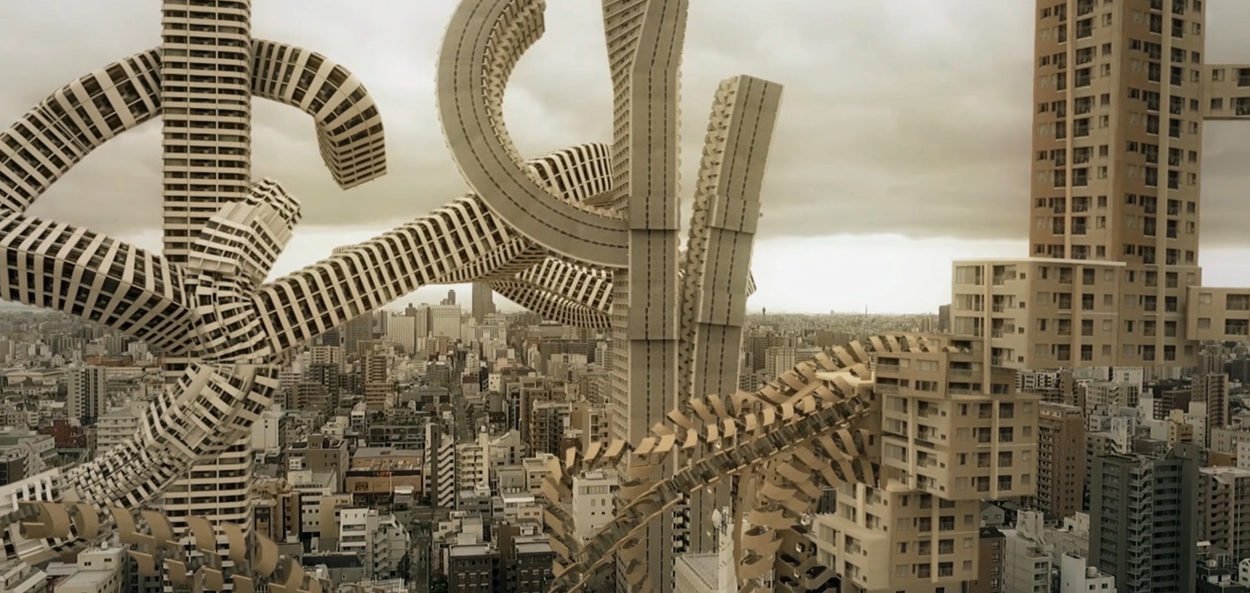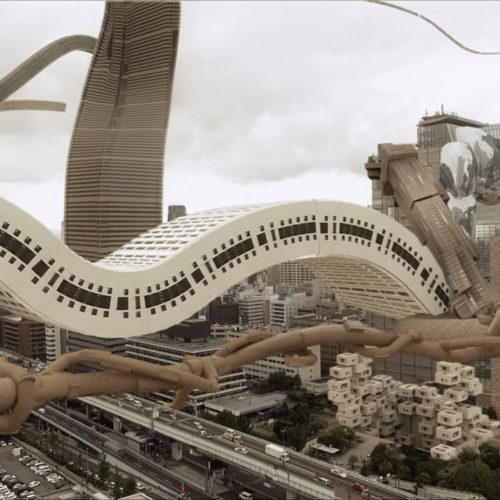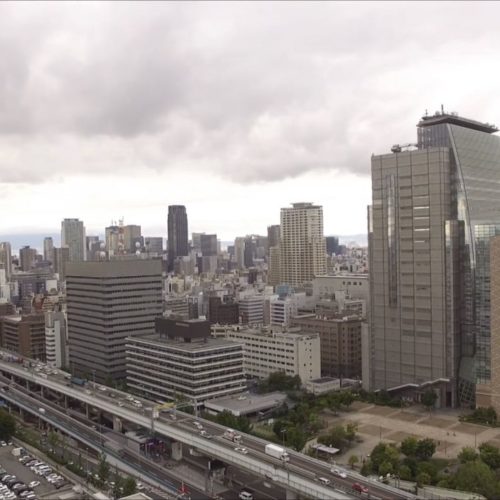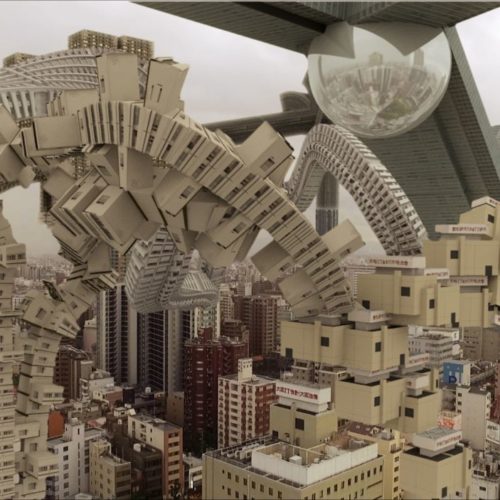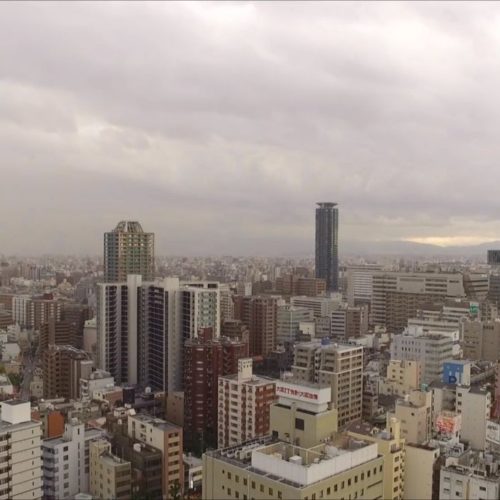“Spatial Bodies” – Winner of the category “Best Architecture Visualization”
The camera pans slowly over the skyline of a Japanese metropolis. The overcast sky makes the urban buildings appear somewhat unspectacular; that is, until we see them start to twist and bend like knots, swinging and stretching out into infinity like materials pressed out of an extruder or, even better, like the tentacles of starfish. The structures sway to trance music as if caught in a balmy wind or an ocean’s current, and we, the viewers, appear to float silently by as if we hopped a ride on a Zeppelin.
Indeed, “Spatial Bodies” invites us into a magical world somewhere between robots, organisms and architecture.
The analogy is pretty accurate, actually, seeing as Stefan Larsson is a self-taught Swedish artist who learned how to do motion tracking by making animated clips of robots and organisms. Larsson is the man behind the label Aujik and he also happens to have lived in Japan for the last 7 years, which explains his choice of Tokyo and Osaka as the inspiration for “Spatial Bodies”. In fact, the post-war Japanese architectural movement known as Metabolism provided the ideal template upon which to transmit Larsson’s notion of breathing life into matter; in this case, he brings architecture to life in a kind of Shinto-animistic way and combines it with a touch of artificial intelligence. The real-life images for the 360-degree panorama-scan taken 100 metres above Osaka were supplied by his DJI Phantom 3 drone as well as by HDR photos and Google Earth images. It took Larsson four months to bring his utopia to life. The motion tracking alone required two weeks using SynthEyes: as part of the process, he selected important buildings on the skyline to undergo further processing and had to equip them with a 3D grid. Larsson did the 3D modelling using 3ds Max, the rendering in V-Ray 2.0, the colour matching with Magic Bullet Suite and all additional post-production using Premiere, After Effects and Photoshop.
The soundtrack was created by electronic music composer Daisuke Tanabe in constant exchange with Larsson during the development of the film.
Credits „Spatial Bodies“: Director: Stefan Larsson – Studio: Aujik – Country: Japan – Software: 3ds Max, V-Ray, After Effects, Premiere
Nominees in this category in the year 2016:
Putzmeister – Bauma 2016
White Apartment
Studio: Schokolade Filmproduktion – Agency: Zet B – Client: Putzmeister Holding GmbH – Country: Germany
Software: Cinema 4D, After Effects
Artist: Florian Tappeser – School: Hochschule Darmstadt – Country: Germany
Software: Maya, Marvelous Designer, Unreal Engine, SpeedTree, Photoshop
Chaos Group is sponsor of the category this year. All further informations here.

